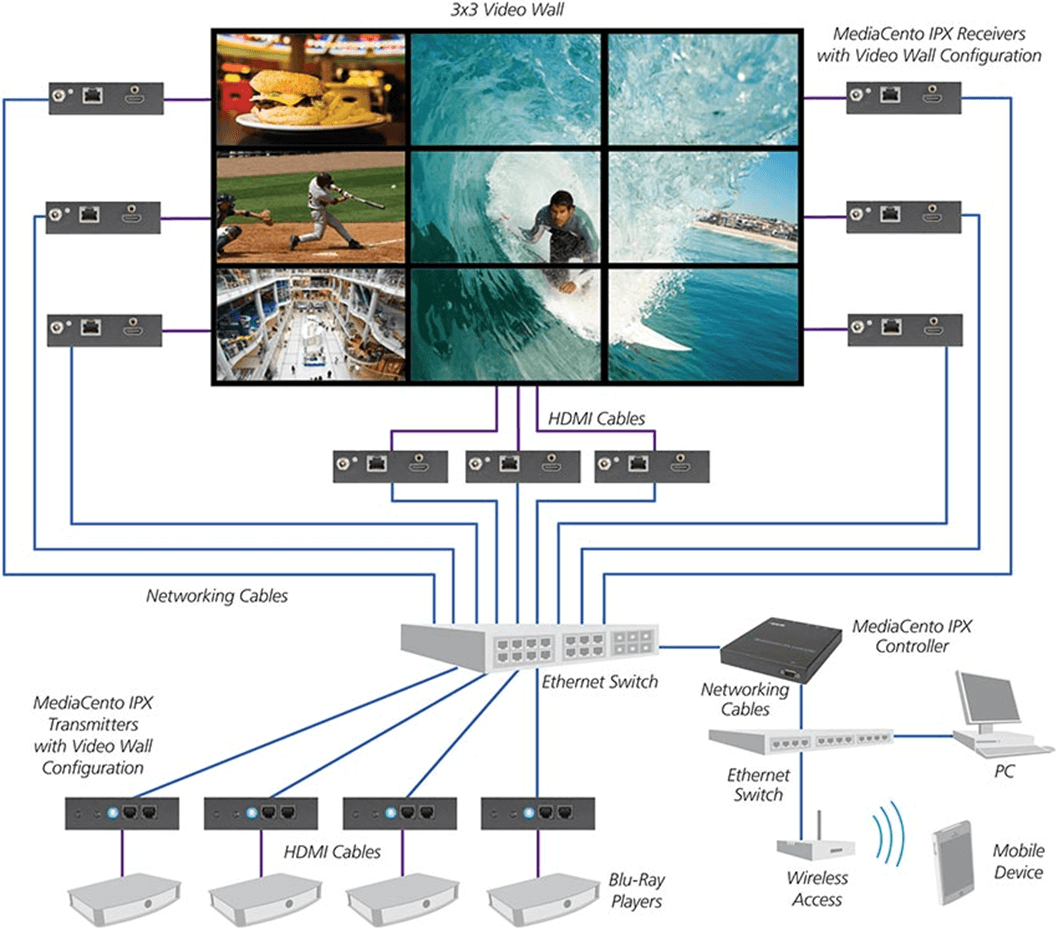Video over IP is a widely used method of delivering video content to an audience over a local or wide area network where media inputs are deconstructed into different streams and then sent over an IP network as individual data packets. Users can watch real-time video and audio content, similar to watching a television broadcast. In the context of media production networks, video over IP can be perceived as a newer alternative to SDI broadcasting which was a standard for many years.
IP multicasting allows the distribution of video and audio to any supported number of displays on a network. In digital signage, for example, a single content source can deliver multimedia to hundreds of displays through one AV transmitter with no need to run dedicated video links from a back room to displays in lobbies. For easy integration, consider using transmitters and receivers that install directly into the existing LAN infrastructure.

Use IP video multicast switches and set the transmitter and receiver to the same multicast or unicast channel so that all IP multicasting settings are automatically configured. Just connect your source, your display(s) and a network switch.
Video-over-IP technology facilitates video signal and format management and opens up new possibilities for user-friendly and highly-scalable video wall control. Set up a video wall by transmitting video signals from multiple sources to multiple screens over an Ethernet network. The MediaCento 1G product solution is shown in the diagram below, but the MCX 10G SDVoE product solution is available as well.

Video distribution over IP can be used in several settings including:
Here are some takeaways when considering high-resolution image distribution for your project:
You should ask yourself some questions before starting your research on components to build-out your AV-related application:
Black Box can help you design an AV- or KVM-over-IP distribution system tailored to your specific needs. Based on extensive experience and a unique product portfolio, our experts will recommend you the right mix of components.
Black Box IP video solutions enable you to extend point-to-point or multicast HDMI video and audio to an unlimited number of screens on a network, making them ideal for distributing digital signage content or other HD video and audio across an Ethernet network. Visit our HDMI over IP Network Distribution – MediaCento IPX page to find out more about our 1G product solution, or check out our MCX AV over IP page for details about our 10G SDVoE product solution.
Learn more in our white paper – Video Transmission over IP: Challenges and Best Practices.
Call us at 1.877.877.2269 to set up a free demo of any of our solutions.